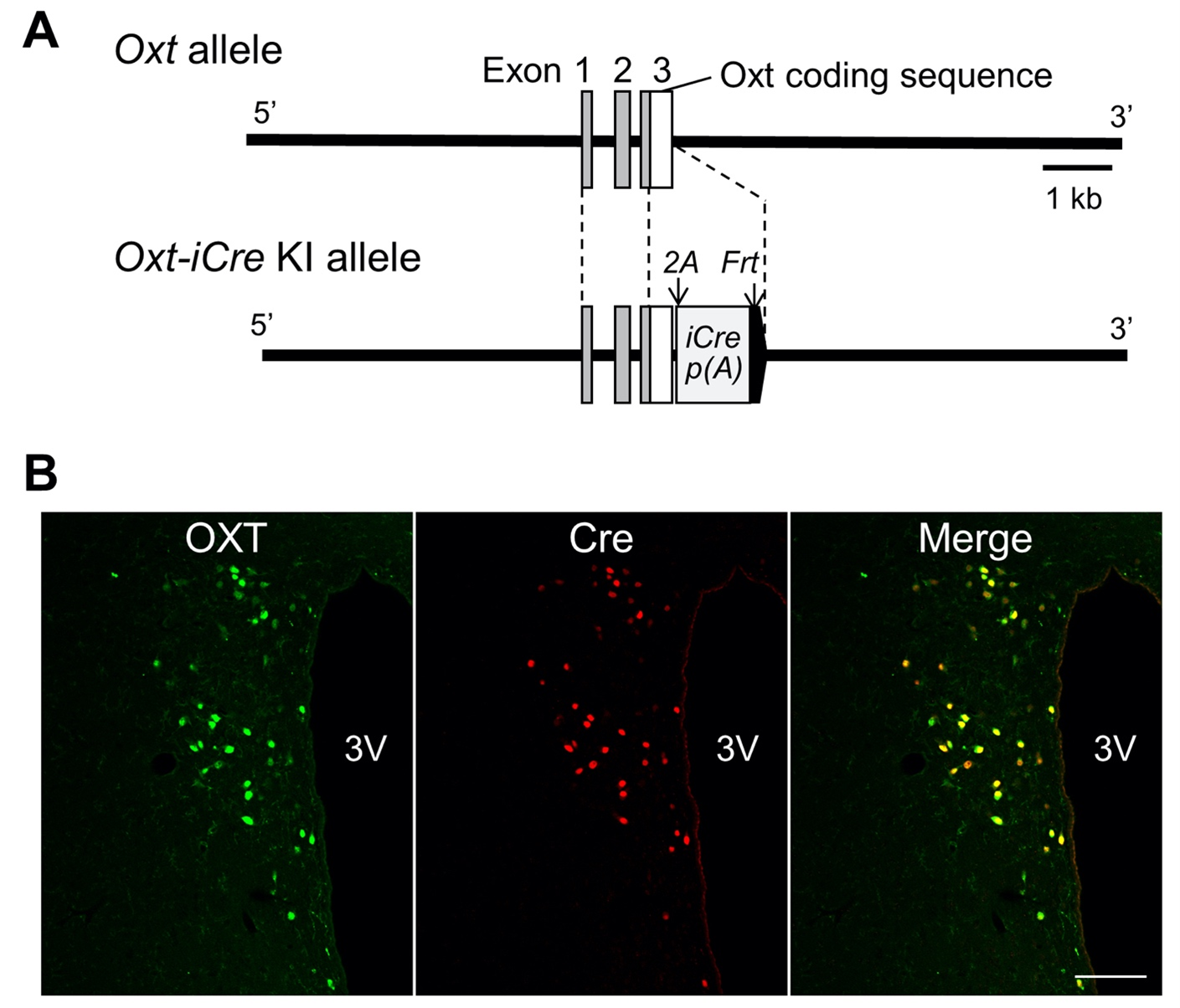 |
August 2022 Mouse of the Month |
Oxytocin neuron Cre-driver mice
C57BL/6-Oxt<tm1.1(Cre)Ksak> (RBRC11316)
|
| Oxytocin (OXT) is a neuropeptide produced in hypothalamus. OXT neurons project their axons to the posterior pituitary lobes to release OXT peripherally into the blood circulation as a peptide hormone. At the same time, OXT neurons innervate several brain regions, where they release OXT as a neuropeptide. Therefore, OXT is known to be involved in regulation of not only peripheral functions such as uterine contractions and lactation, but also central functions such as social, aggressive, fear, and maternal behavior. Oxt-iCre KI mice (RBRC11316) express iCre recombinase under the control of endogenous Oxt gene promoter. In fact, the depositor (Dr. Furuichi) and his colleagues carried out mating experiments with Oxt-iCre KI mice and Caps2 (Ca2+-dependent activator protein for secretion 2) gene floxed mice (C57BL/6-Cadps2<tm1.1Ksak>; RBRC11315). As a result of analysis, they reported that CAPS2, a regulator of exocytosis of dense-core vesicles containing neuropeptides, peptide hormones, and amine neurotransmitters, function in OXT release, thereby being correlated with social behavior regulation. OXT is a remarkable peptide hormone in terms of both peripheral and central functions. We hope that Oxt-iCre KI mice will be used to elucidate mechanisms of various physiological phenomena and to develop treatments for social behavior disorders. |
| Depositor | : | Teiichi Furuichi, Ph.D. Tokyo University of Science |
|
| Developer | : | Kenji Sakimura, Ph.D. Niigata University |
|
| Strain name | : | C57BL/6-Oxt <tm1.1(Cre)Ksak> (Oxt-iCre KI) | |
| RBRC No. | : | RBRC11316 | |
| Reference | : | [1] | Fujima S, Yamaga R, Minami H, Mizuno S, Shinoda Y, Sadakata T, Abe M, Sakimura K, Sano Y, Furuichi T. CAPS2 Deficiency Impairs the Release of the Social Peptide Oxytocin, as Well as Oxytocin-Associated Social Behavior. J Neurosci. 2021 May 19;41(20):4524-4535. |
| August 2022 Saori Mizuno, Ph.D. Contact: Experimental Animal Division, RIKEN BioResource Research Center (animal.brc@riken.jp) All materials contained on this site may not be reproduced, distributed, displayed, published or broadcast without the prior permission of the owner of that content. |





